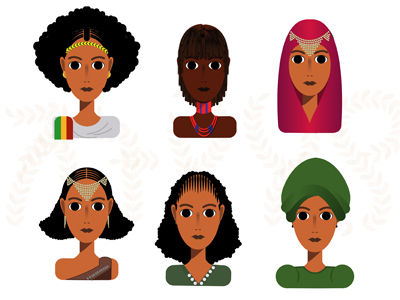Girls and
Young Women
Around the world, there is growing recognition that girls are a special population.
Around the world, there is growing recognition that girls are a special population. Bersama has seen how programs can discount their particular vulnerabilities, strengths, constraints and learning preferences and in this way limit girls’ access to programming. We co-design programs with girls as co-investors in programs as they are key to reaching all girls.
When we design for and with girls, we see programs like 12+ in Rwanda take root, then catch the attention of the Ministry of Health and ultimately reach 112,000 girls. Bersama’s Veronica Torres designed a suite of materials for 12+ that took on a life of its own as girls implemented the skills and taught others.
Furthermore, close to 1,000 young women mentors have learned along with them and developed skills that make them employable and recognized by their communities. In this area, Bersama has led the development of adolescent girl programs focused on life skills, mitigating early marriage, preventing gender-based violence, supporting access to savings groups and savings accounts, enabling community engagement with girls as community participants and advocates in health, environmental, and safety campaigns.
We are experienced in designing and using a range of girl-inclusive tools including measurements tools, and girl-inclusive design labs.
Project 1
Getting to know
deep seated gender beliefs in Senegal
The APTE team in Senegal was aware of many of the assumptions surrounding girls and boys–girls will marry, boys are able to study science, boys are able to earn more through part-time work. Less clear was how these assumptions push girls and boys
The assessment was designed to fill the gaps in the literature review and in particular look for the perceptions and beliefs that impacted how girls and boys access educational opportunities.
The team in Senegal walked away from the assessment with deeper insights as to why and how household decisions affect boys and girls. And this matters because it means the team is more able to design girl-inclusive programming.

“content is geared towards building skills to implement community-facing activities such as safe school campaigns and promoting health services.”
Project 2
Challenging assumptions about girls in Ethiopia and building safe space content
Girl Effect in Ethiopia undertook an extensive assessment in order to understand girls before designing a safe space with content for them. At the outset the team held onto the belief that girls do not have access to financial resources, which is problematic because it underestimates how much girls desire to learn about money management, need it for their own success and currently manage money.
We challenged this notion and forced the team to see girls as earners (who sometimes take risks to do so)thereby repositioning girls from passive observers to active stewards in their own lives.
The team also shifted away from just informing girls of support services (which they already knew about) to instilling the self-confidence and opportunity to access them in a safe way.
Based on research findings, we then developed 4 differentiated curricular packages for girls 11-12 and 13-14 in Oromia and Amahara focused on softs skills and livelihoods. The curricular package includes manuals written in clear and simple language for “mentors” with a ranging literacy levels and girl handbooks with visual reminders of the lessons. This curricular package is unique because content is geared towards building skills to implement community-facing activities such as safe school campaigns and promoting health services.

